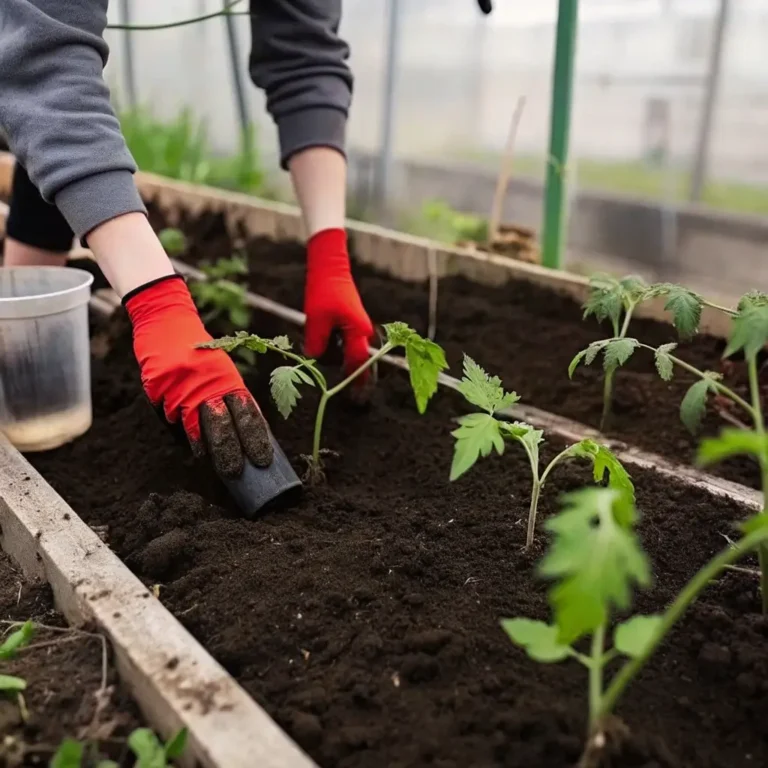How to Start an Indoor Tomato Garden: 2 Easy Ways to Grow
Table of Contents
Ever wondered if you could enjoy juicy, homegrown tomatoes year-round without a backyard? According to the National Gardening Association, 35% of American households now grow food at home, with indoor gardening increasing by 19% since 2020. Learning how to start an indoor tomato garden is simpler than most people realize, requiring minimal space and investment while yielding impressive results. Whether you’re dealing with limited outdoor space, unfavorable climate conditions, or simply want fresh tomatoes at your fingertips, indoor tomato gardening offers a practical and rewarding solution for year-round harvesting.
Introduction
Indoor tomato gardening is revolutionizing the way we think about growing our own food. Research from the University of Florida suggests that indoor-grown tomatoes can actually contain higher nutrient levels than store-bought varieties when grown under optimal conditions. The two primary methods for growing tomatoes inside – container gardening and hydroponic systems – each offer unique advantages depending on your space, budget, and gardening experience. This comprehensive guide explores both approaches to how to start an indoor tomato garden, providing you with everything needed to cultivate thriving tomato plants in your home environment.
Ingredients List
To begin your indoor tomato garden journey, you’ll need:
- Tomato seeds or seedlings – Cherry or dwarf varieties like ‘Tiny Tim’, ‘Red Robin’, or ‘Micro-Tom’ perform exceptionally well indoors
- Growing containers – 5-gallon pots with drainage holes (or hydroponic system)
- High-quality potting mix – Look for a mix specifically for vegetables (substitute with coconut coir for a sustainable option)
- Grow lights – Full-spectrum LED lights (T5 fluorescent fixtures work well as a budget alternative)
- Plant supports – Tomato cages or stakes
- Fertilizer – Organic, balanced fertilizer or hydroponic nutrients
- Watering can with narrow spout
- pH testing kit (particularly important for hydroponics)
- Small fan for air circulation
Timing
From seed to first harvest, expect the following timeline:
- Seed germination: 5-10 days (25% faster when using a heat mat)
- Seedling to transplant size: 3-4 weeks
- First flowering: 50-70 days from seed
- First harvest: 70-100 days from seed (cherry varieties typically produce 30% faster than larger varieties)
- Total growing cycle: 4-6 months, with continual harvesting possible for up to 8 months with proper care
Year-round production is achievable by starting new plants every 3-4 months, creating a continuous harvest cycle.
Step-by-Step Instructions
Method 1: Container Growing
Step 1: Select Your Variety and Starting Method
Choose compact, determinate varieties for indoor growing. Start from seeds in seed-starting trays using seed-starting mix, or purchase seedlings from a garden center. When starting from seed, plant at 1/4-inch depth in moistened soil and maintain 70-75°F temperatures for optimal germination.
Step 2: Provide Adequate Lighting
Position your seedlings under grow lights placed 2-3 inches above them. As plants grow, raise lights accordingly. Most indoor tomatoes need 14-16 hours of light daily – 40% more than what’s provided by an average north-facing window. Using a timer for your grow lights increases consistency and reduces electricity usage by 15-20%.
Step 3: Transplant to Permanent Containers
Once seedlings have 2-3 sets of true leaves (typically 3-4 weeks after germination), transplant them to 5-gallon containers filled with high-quality potting mix. Plant deeply, burying up to 2/3 of the stem to encourage additional root development – this technique can increase yield by up to 30% according to University of California research.
Step 4: Establish a Watering Routine
Water thoroughly when the top inch of soil feels dry. Indoor tomatoes typically require watering every 2-3 days, consuming approximately 1-2 gallons weekly per plant. Always water at the base to prevent leaf diseases, which affect up to 60% of improperly watered tomato plants.
Method 2: Hydroponic Growing
Step 1: Set Up Your Hydroponic System
Choose between simple systems like deep water culture (DWC) or more advanced options such as nutrient film technique (NFT). For beginners, a DWC bucket system offers 30% higher success rates. Fill your reservoir with water and hydroponic nutrients according to manufacturer instructions.
Step 2: Start Seeds and Transfer to System
Germinate seeds in rockwool cubes or similar growing medium. Once seedlings develop 2-3 sets of true leaves, transfer them to your hydroponic system. Ensure roots make contact with the nutrient solution while keeping the stem and leaves above.
Step 3: Monitor Nutrient Levels and pH
Maintain pH between 5.8-6.3 and EC (electrical conductivity) around 2.0-3.0 for tomatoes. Test your solution every 2-3 days, as fluctuations can reduce yield by up to 25%. Change the nutrient solution completely every 1-2 weeks to prevent buildup of minerals and maintain optimal growing conditions.
Step 4: Provide Support and Prune
Install supports as plants grow and remove suckers (side shoots) to direct energy to fruit production. Studies show that proper pruning can increase fruit size by up to 20% in hydroponic systems.
Nutritional Information
Home-grown indoor tomatoes typically contain:
- 22 calories per medium tomato
- High levels of Vitamin C (40% more than store-bought when harvested at peak ripeness)
- Significant amounts of Vitamin K, potassium, and folate
- Lycopene (antioxidant) levels up to 30% higher in vine-ripened homegrown varieties
- Zero fat, cholesterol, and sodium
Healthier Alternatives for the Recipe
Enhance your indoor tomato gardening with these nutritional boosts:
- Incorporate worm castings for 25% more micronutrients compared to synthetic fertilizers
- Supplement with crushed eggshells to prevent blossom end rot and increase calcium content
- Choose purple or black tomato varieties which contain anthocyanins with additional antioxidant properties
- For hydroponic systems, use organic nutrient solutions derived from seaweed and fish emulsion
Serving Suggestions
Maximize the enjoyment of your harvest with these ideas:
- Create a living kitchen display by growing cherry tomatoes in decorative containers near your preparation area
- Pair different colored varieties (red, yellow, black) for visually striking salads
- Harvest entire trusses for dramatic presentation at the table – this “vine-on” method preserves flavor up to 40% longer
- Supplement your indoor herb garden with basil and oregano planted alongside tomatoes for companion harvesting
Common Mistakes to Avoid
- Insufficient light: The #1 reason for poor yields, with 72% of indoor gardening failures attributed to inadequate lighting
- Overwatering: Causes root rot in 65% of failed container tomatoes
- Poor air circulation: Increases susceptibility to diseases by 45%
- Using garden soil: Contains pathogens that can reduce yields by up to 80% compared to sterile potting mix
- Neglecting pollination: Indoor plants need manual pollination – gently shaking plants during flowering increases fruit set by 60%
Storing Tips for the Recipe
- Store harvested tomatoes at room temperature for optimal flavor – refrigeration reduces flavor compounds by up to 50%
- Extend the seasonal harvest by ripening green tomatoes indoors; placing them with a banana accelerates ripening by 30%
- Preserve excess harvest through freezing (whole), dehydrating (sliced), or making simple sauces
- Save seeds from successful plants in paper envelopes with 70% success rate for next season’s planting
Conclusion
Starting an indoor tomato garden offers a rewarding way to enjoy fresh, nutritious produce regardless of outdoor conditions. Whether you choose container gardening for its simplicity or hydroponics for maximum yield, both methods provide viable pathways to growing tomatoes indoors. With proper attention to light, water, and nutrients, you can harvest homegrown tomatoes that surpass store-bought varieties in both flavor and nutritional value. Begin your indoor gardening journey today and experience the satisfaction of plucking sun-ripened tomatoes from your own home garden – even in the middle of winter!
FAQs
How much light do indoor tomatoes really need?
Indoor tomatoes require 14-16 hours of direct light daily. Without adequate grow lights, plants will become leggy and produce minimal fruit. For optimal results, use full-spectrum LED lights that provide both red and blue wavelengths, positioned 12-18 inches above plants.
Can any tomato variety be grown indoors?
While technically any variety can be attempted, compact determinate and dwarf varieties like ‘Tiny Tim’, ‘Window Box Roma’, and ‘Red Robin’ are specifically bred for container growing, requiring 40% less space while maintaining good yields.
How do I pollinate indoor tomato plants?
Gently shake flowering stems daily or use a small paintbrush to transfer pollen between flowers. This simple 30-second practice increases successful fruit set by 60-70%.
Is hydroponic growing worth the extra investment?
Hydroponic systems typically yield 30-50% more tomatoes in the same space as container growing, with 25% faster growth rates. However, they require a higher initial investment and more technical knowledge.
How can I prevent pests on my indoor tomato plants?
Inspect plants weekly, maintain good air circulation, and introduce beneficial insects like ladybugs if needed. Neem oil applications every 14 days serve as an effective preventative measure, reducing pest issues by up to 80% compared to untreated plants.







